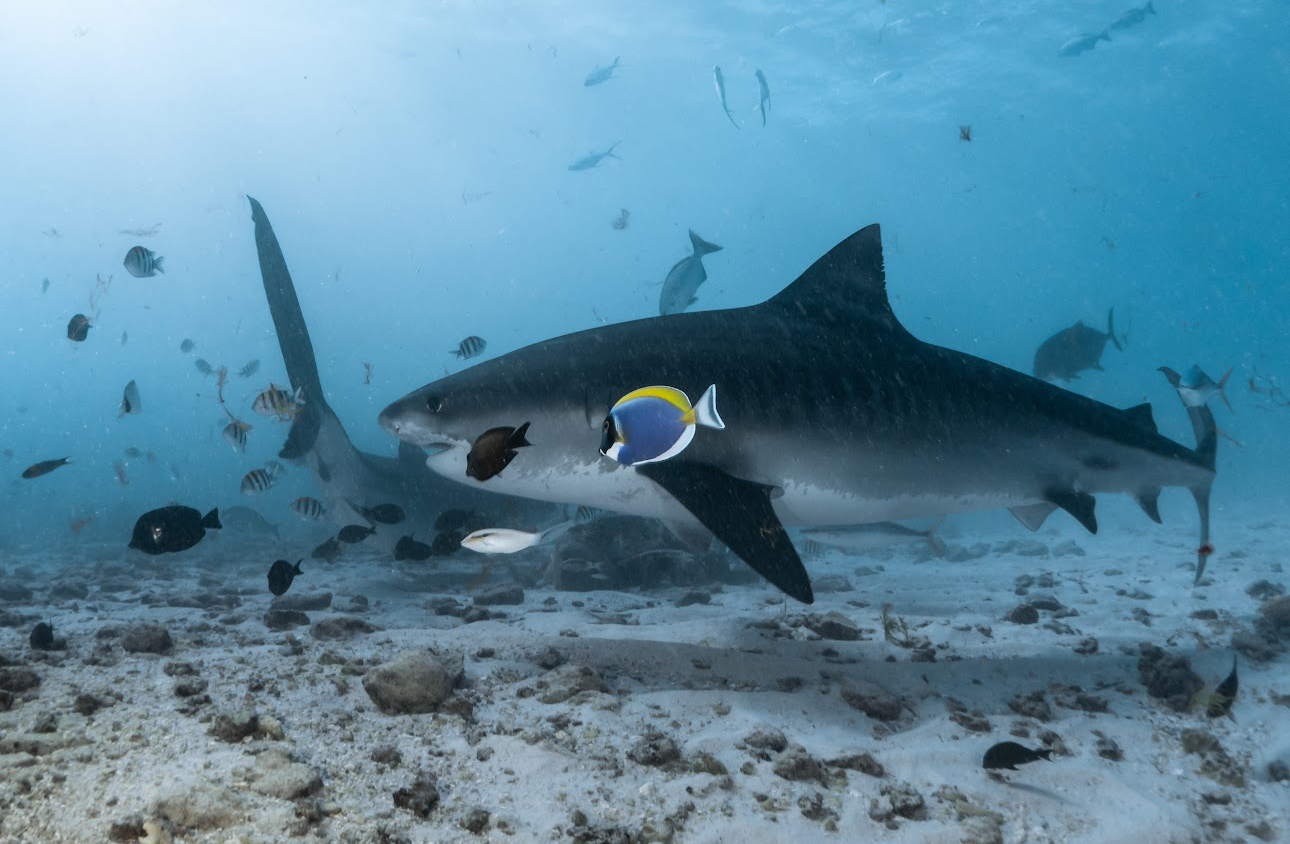
Guidelines for Ethical Diving at Tiger Shark Point, Fuvahmulah
Sharing is caring!
Published on 25 Sep, 2025
By: Joyce Osorio
Director of Sales & Business Development
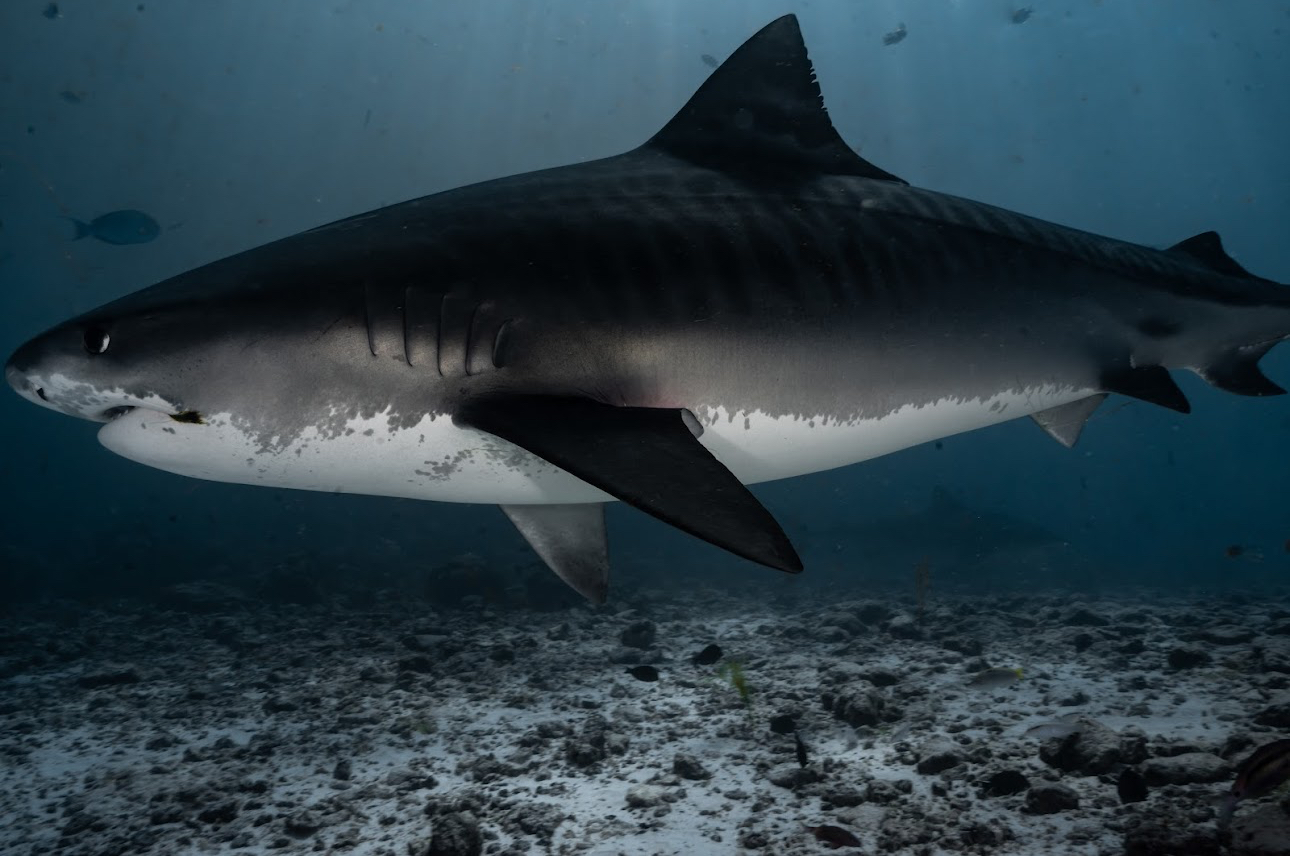
- Situated adjacent to one side of the entrance to Fuvahmulah Harbour, Tiger Shark Point presents distinctive challenges due to its proximity to heavy traffic, shallow depths ranging from 5 to 7 meters, and intermittent currents. Divers are urged to exercise caution to prevent accidents and minimize disruptions to marine traffic.
- The designated descent points may be altered based on prevailing weather conditions, as determined by the discretion of the dive guide.
- Our diving center offers exclusive time slots for tiger shark diving, ensuring a focused and safe experience for enthusiasts.
- During each dive, we deploy either one or two dive dhoani boats, depending on the total number of divers present. These boats remain stationed in the dive area until the dive session is completed.
- To maintain uniformity and safety, it is mandatory to utilize the same entry point for both descent and ascent procedures.
OUR DIVE & BOAT TEAM
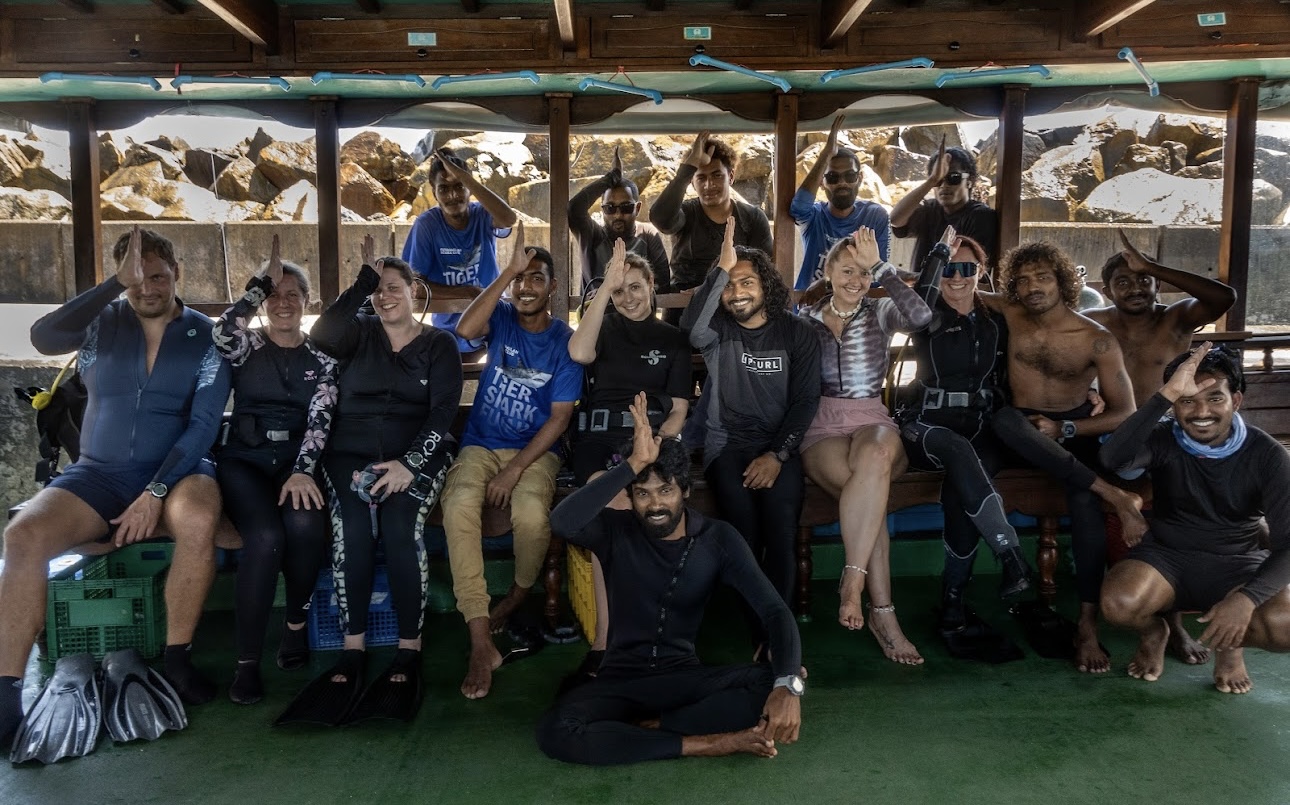
- 04 DIVE GUIDES AND 2 DIVE ASSISTANTS
- 02 BOAT CAPTAINS
- 5 CREW MEMBERS
- DIVE BOAT
- 50" FEET DIVING BOAT (Maximum Divers Occupancy 20)
- 60" FEET DIVING BOAT (Maximum Divers Occupancy 30)
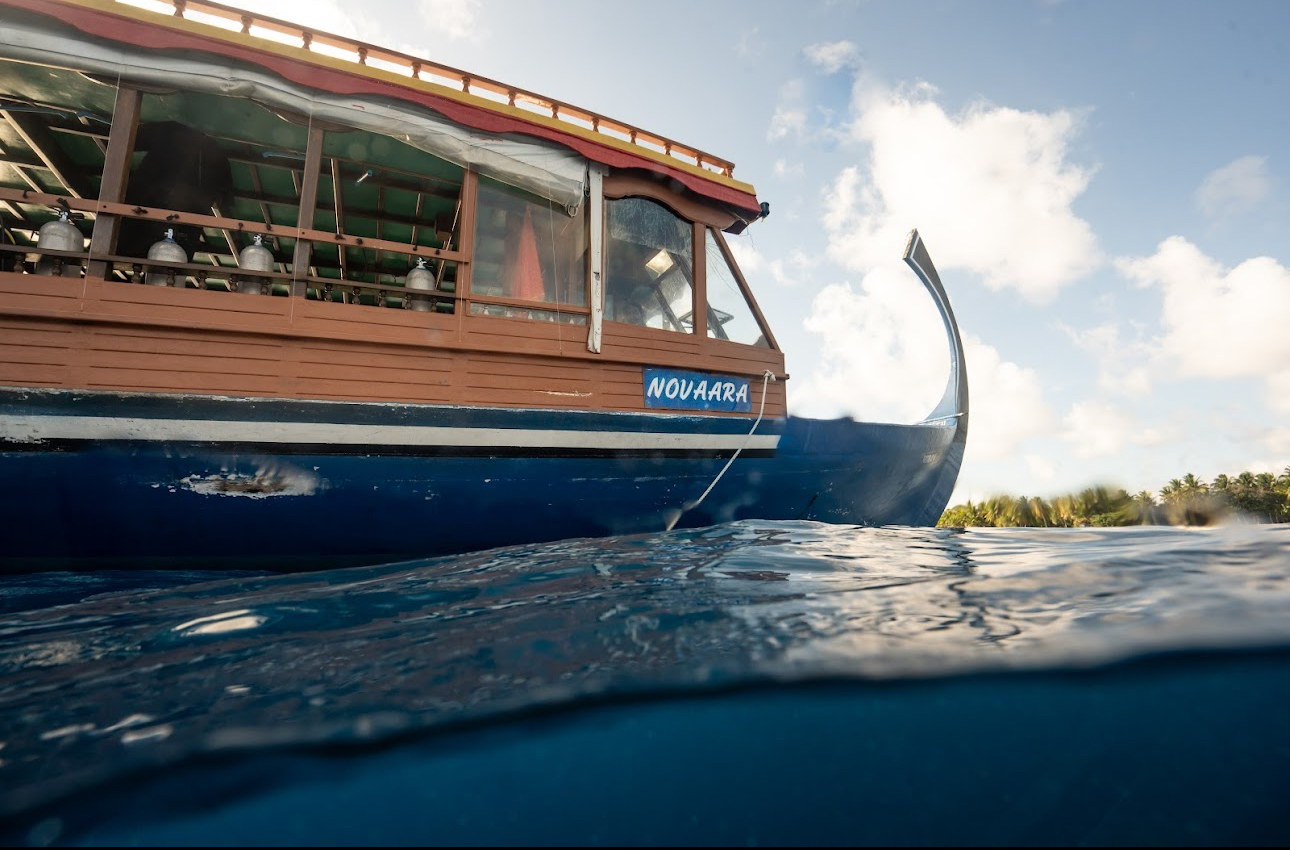
MINIMUM REQUIREMENTS
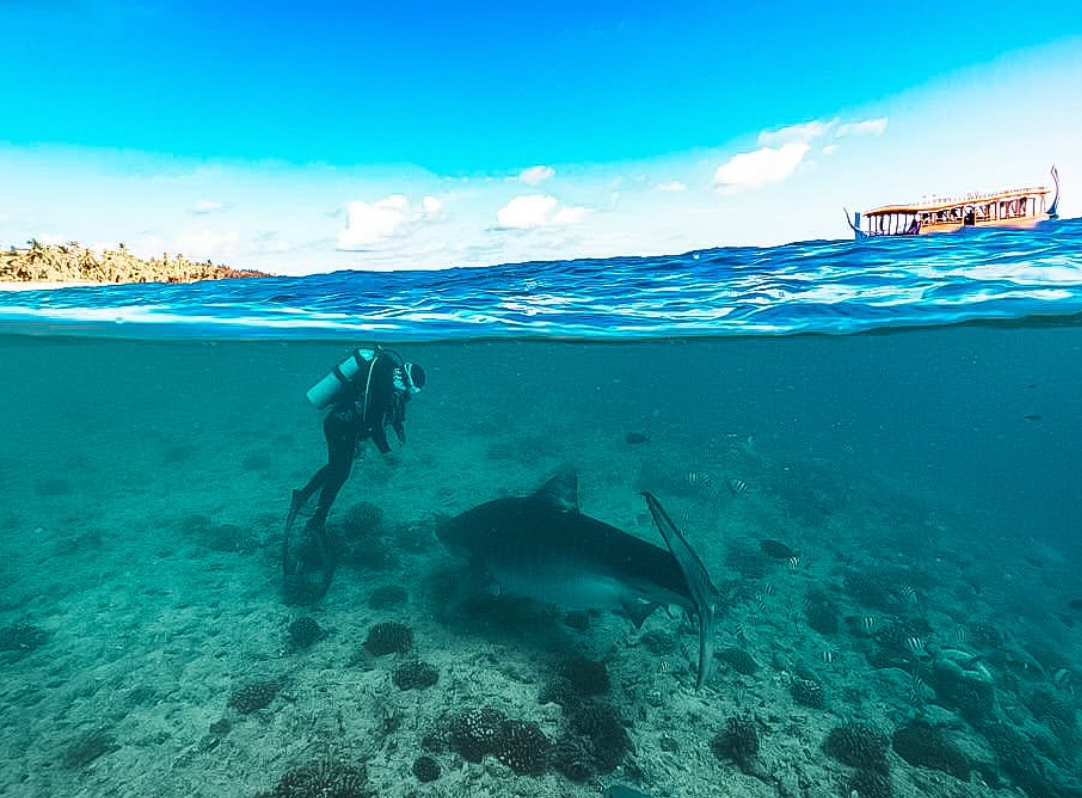
- Divers must hold Advanced Open Water (AOW) certification (100+ logged dives recommended).
- Orientation dives are compulsory for all Advanced Open Water and advanced divers who have not dived in the past six months.
- Beginners interested in diving with tiger sharks must complete an Open Water Diver (OWD) course with us, which typically takes four to five days.
DIVE BRIEFING
- Before the trip commences, divers must receive a comprehensive briefing from a dive guide regarding the dive site and procedures, as well as information on tiger sharks and their behaviors.
- The briefing must emphasize all relevant safety measures, particularly regarding the perilous nature of diving with tiger sharks.
- An onboard briefing will be conducted during dive preparations, during which guides inspect all equipment, including additional safety gear for all guests.
- Divers should be instructed on proper descent procedures and equipment maintenance. Once the boat's engine is turned off, dive guides and assistants will enter the water.
- Divers must be warned to steer clear of the boat's propeller at the rear and remain vigilant when the captain maneuvers the boat.
DRESS CODE
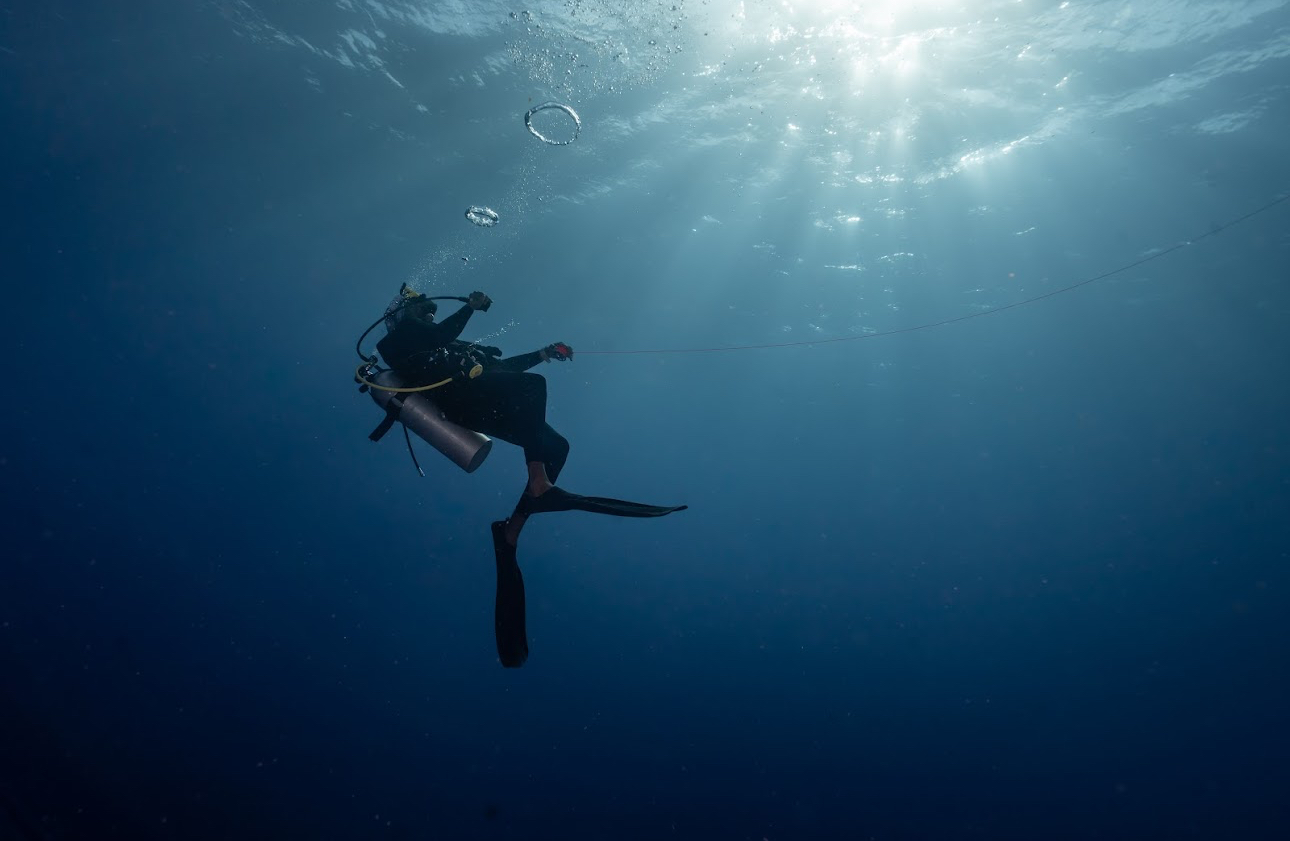
- Recommended attire includes a dark-colored neoprene shorty or full suit to avoid bright colors (yellow, orange, or flashy).
- Diving gloves are optional but may be necessary for holding onto rocks during the dive.
EXTRA EQUIPMENT
- Divers are prohibited from carrying additional equipment for emergencies. However, one buoy may be attached to the body and concealed in the BCD bags for emergencies.
PHOTOGRAPHY
- A briefing on video and photography will be provided by the guide.
- Cameras should not be operated during descent and ascent.
- Flashlights and other external lighting sources are not permitted.
- Exclusive dives for film and photo shoots can be arranged upon request, with professional photographers having the option to request a personal assistant for an additional fee.
MAXIMUM DIVERS
- We can accommodate up to 50+ divers during peak season.
- We provide a minimum of 03 Dive Guides for Tiger Dives, maintaining a ratio of 1 dive guide for every 4 divers.
- The Big Dhoni Boat can accommodate 30 Divers, while the Small Dhoni Boat can accommodate 20 Divers.
DESCENT
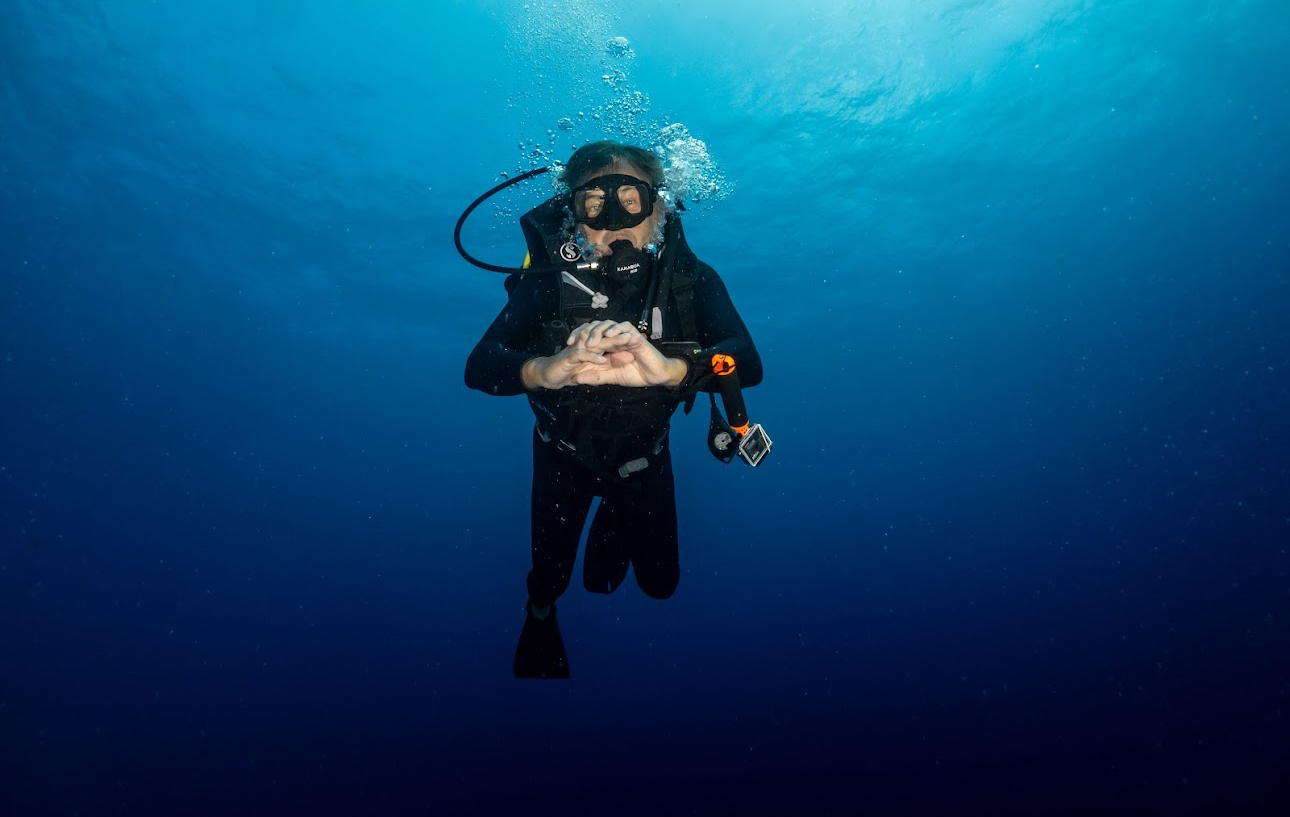
- Once the boat is positioned, the guide will instruct the assistant to enter the water. Divers may then follow the guide and assistant into the water.
- Assistants and dive guides should monitor the surrounding environment while all divers are in the water.
- Upon the entry of all divers into the water, they should form a compact group on the surface until the dive guide signals to descend.
- Divers should avoid prolonged surface time and descend in a controlled manner, staying close to the group until reaching the dive site.
- If a diver encounters difficulty equalizing, the group should wait until the guide decides on the next course of action.
DIVING
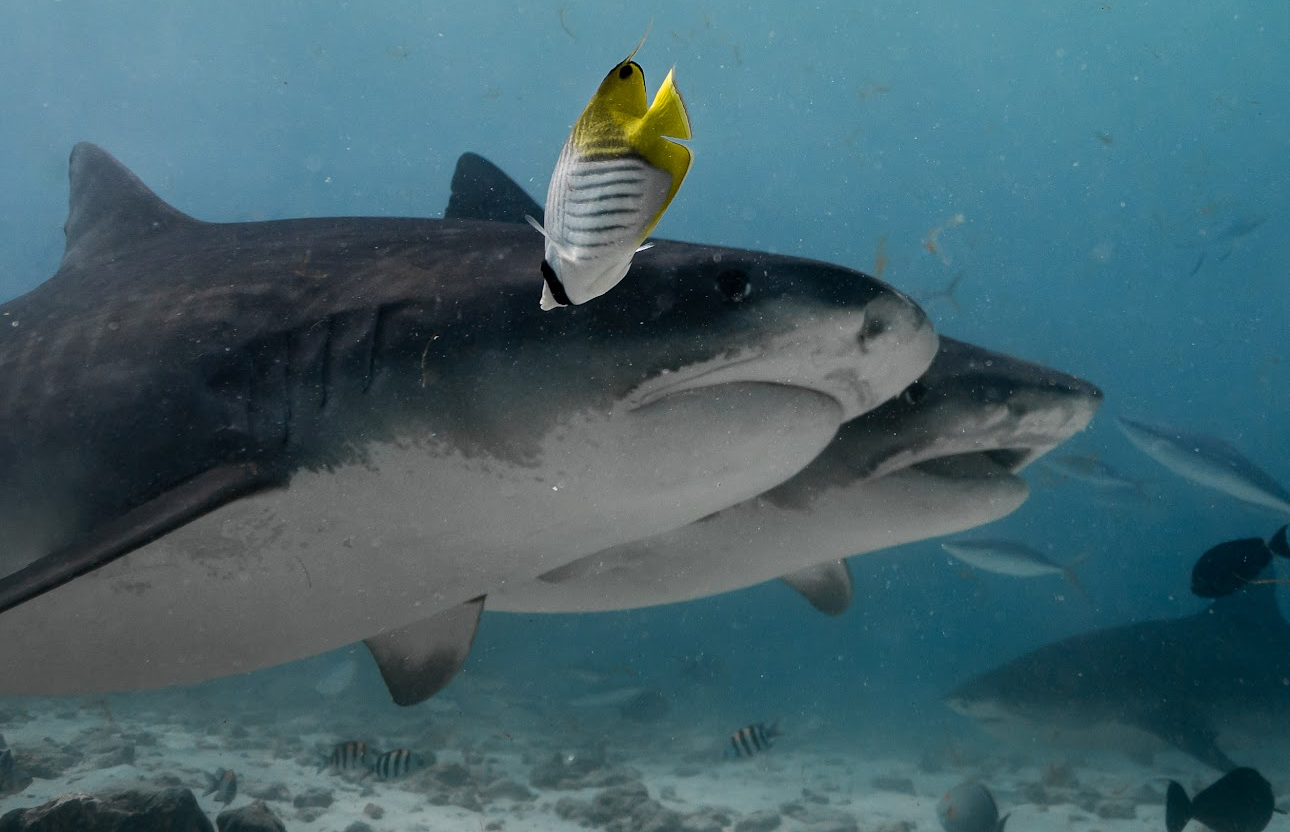
- Maximum dive time is 45 minutes, with dive depths ranging between 5 and 30 meters.
- The dive leader will determine the best diving plan based on diver skill levels and current environmental conditions.
- In open water, assistant guides will ensure divers remain together and compact near the reef, providing cover behind the group.
- Divers should refrain from chasing or obstructing the shark's swimming path and maintain constant awareness of tiger shark behavior.
- Divers must remain calm, control their breathing, and avoid producing excessive bubbles or sudden movements.
- All divers must regularly check their air gauge and inform the guide. If any diver's air level reaches 50 bars, they must signal the assistant or guide, and the entire group should begin ending the dive by staying closely together.
SHARKS REDIRECTING
- If sharks encroach upon personal space, divers should exhale bubbles to redirect them.
- If the guide notices any changes in the shark's movement or behavior, such as downward movement of pectoral fins or increased muscle tension, the group must be calmly relocated by the guide.
- Divers must avoid direct contact with tiger sharks, including touching or handling them. Guides will redirect sharks if they approach divers too closely.
ASCENT
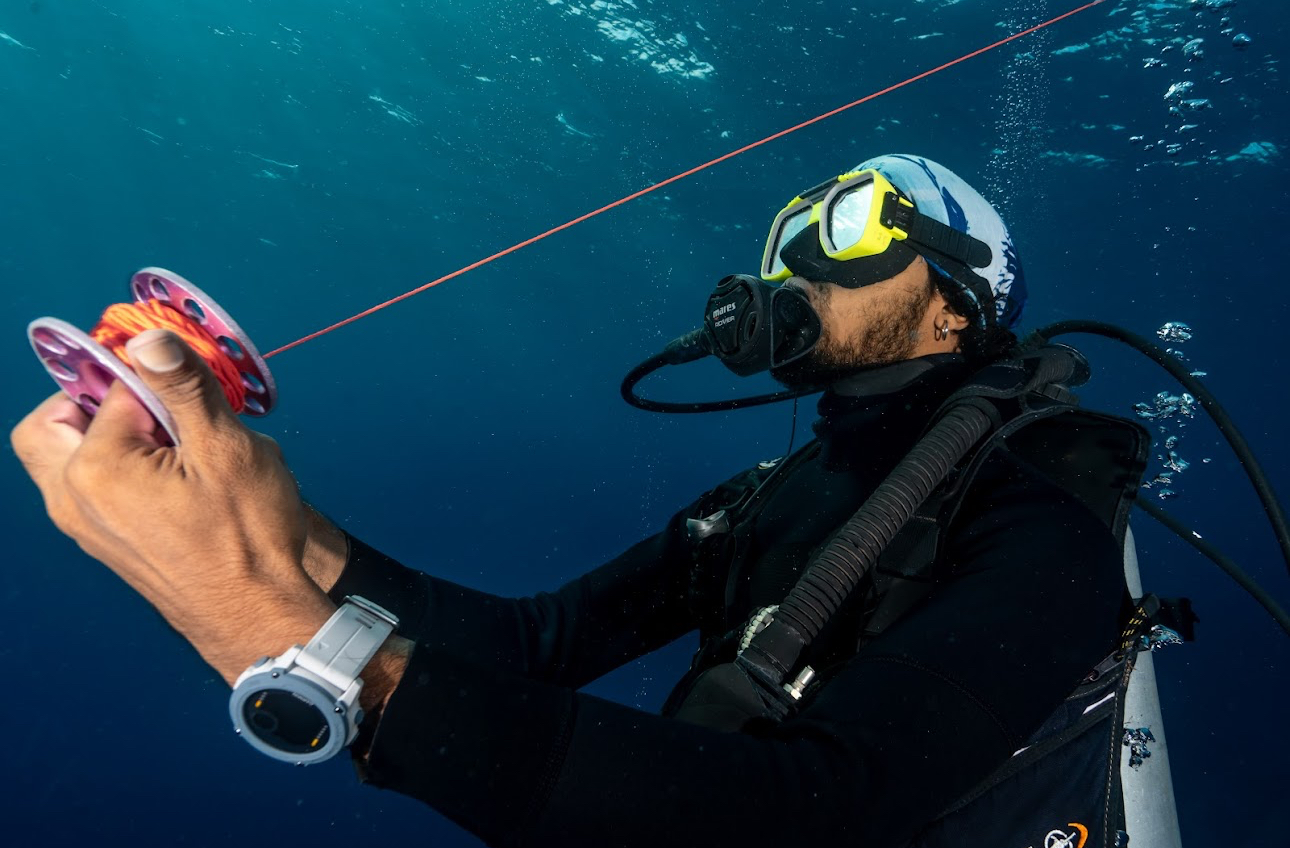
- Upon the guide's signal, divers should follow and move away from Tiger Shark Point toward the entry point.
- The entire group should ascend together after the assistant removes the buoy.
- The guide will signal a "safety stop" to indicate the end of the dive. The group should ascend at a rate of 9 meters per minute until reaching a depth of 5 meters for a safety stop lasting 3 minutes.
- During the safety stop, the group should remain together near the reef and avoid open water.
- The guide will signal "UP," and the group will ascend to the surface.
BACK ON THE BOAT
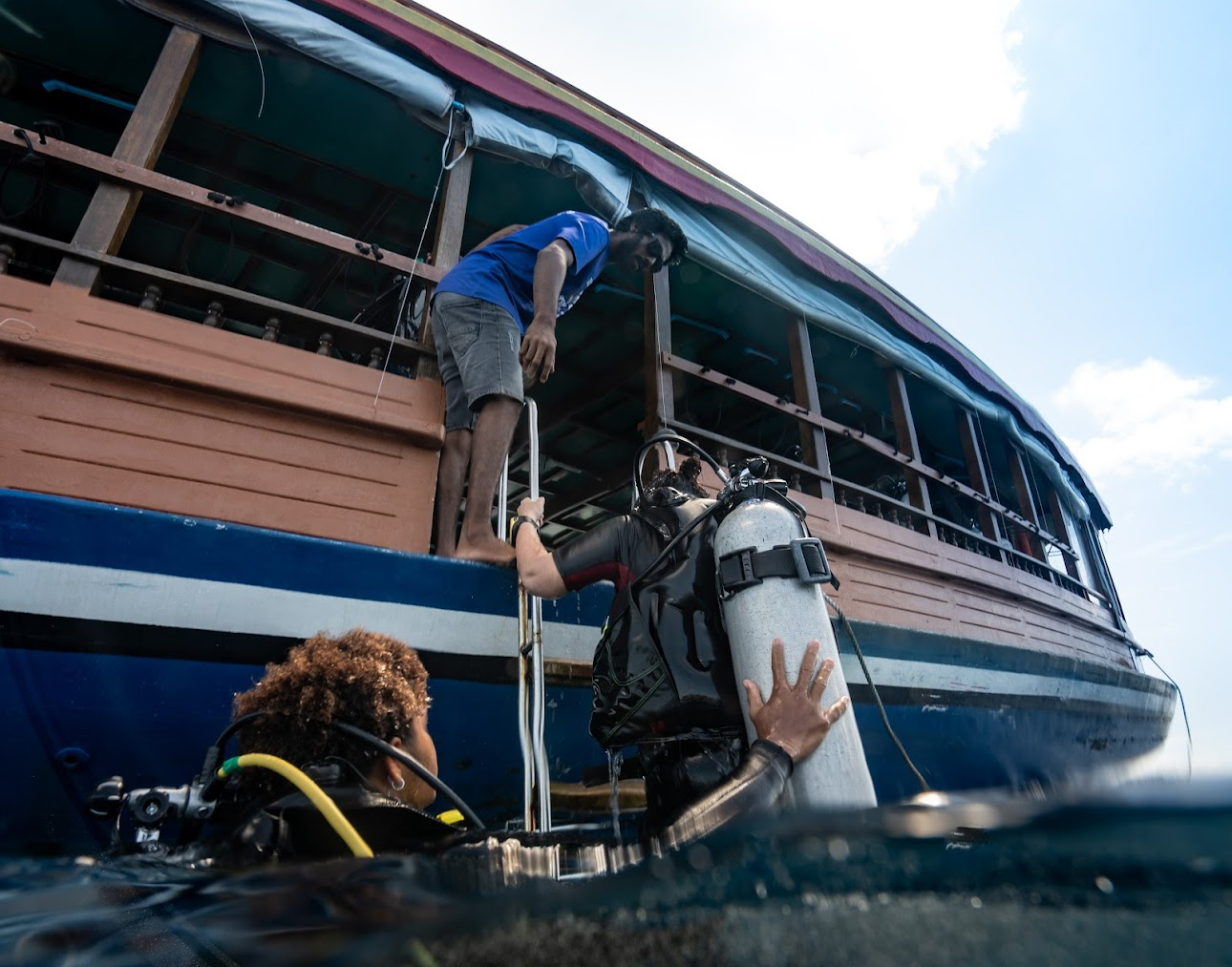
- Divers must stay away from the boat's propeller near the back.
- Divers board first, one by one using the ladder, while dive guides and assistants remain in the water to monitor the area.
- Boat crew assists divers to get on the boat
- Captain will monitor the surroundings.
- The guide will signal UP, and the group will ascend to the surface.
- The diving team must make sure that everyone is on board before leaving.
Tags
Recent Articles
-
 Highly Recommended Restaurants in Fuvahmulah – Our Personal FavoritesStory Dec 11, 2025
Highly Recommended Restaurants in Fuvahmulah – Our Personal FavoritesStory Dec 11, 2025 -

-

-
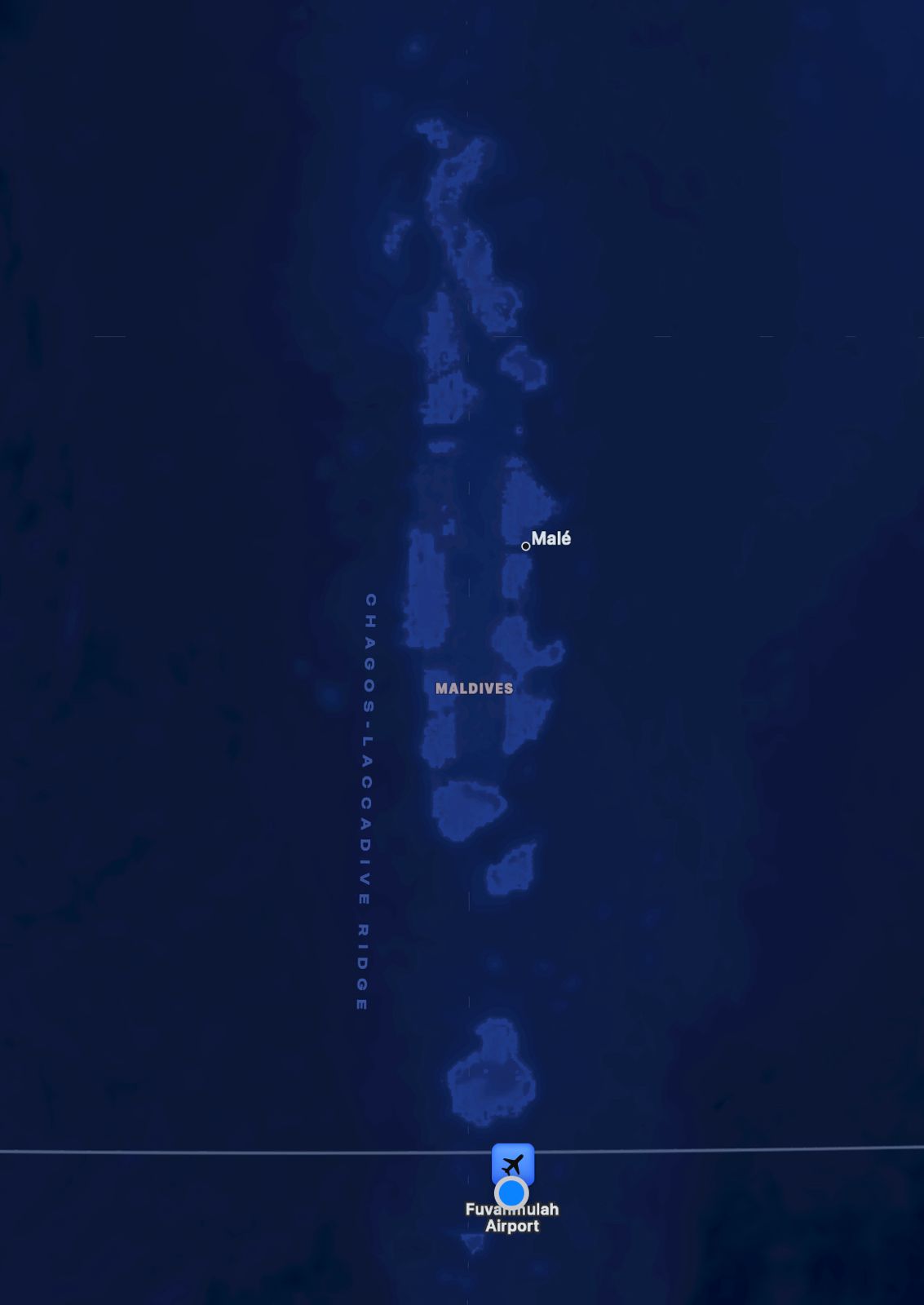 How to Get to Fuvahmulah Island: A Comprehensive Travel GuideTravel Sep 25, 2025
How to Get to Fuvahmulah Island: A Comprehensive Travel GuideTravel Sep 25, 2025 -
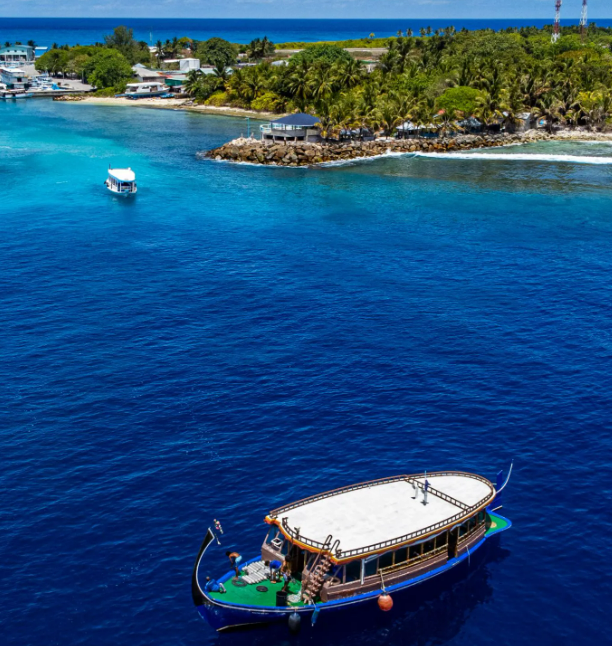 Discover Fuvahmulah Island with Fuvahmulah Scuba ClubStory Sep 25, 2025
Discover Fuvahmulah Island with Fuvahmulah Scuba ClubStory Sep 25, 2025